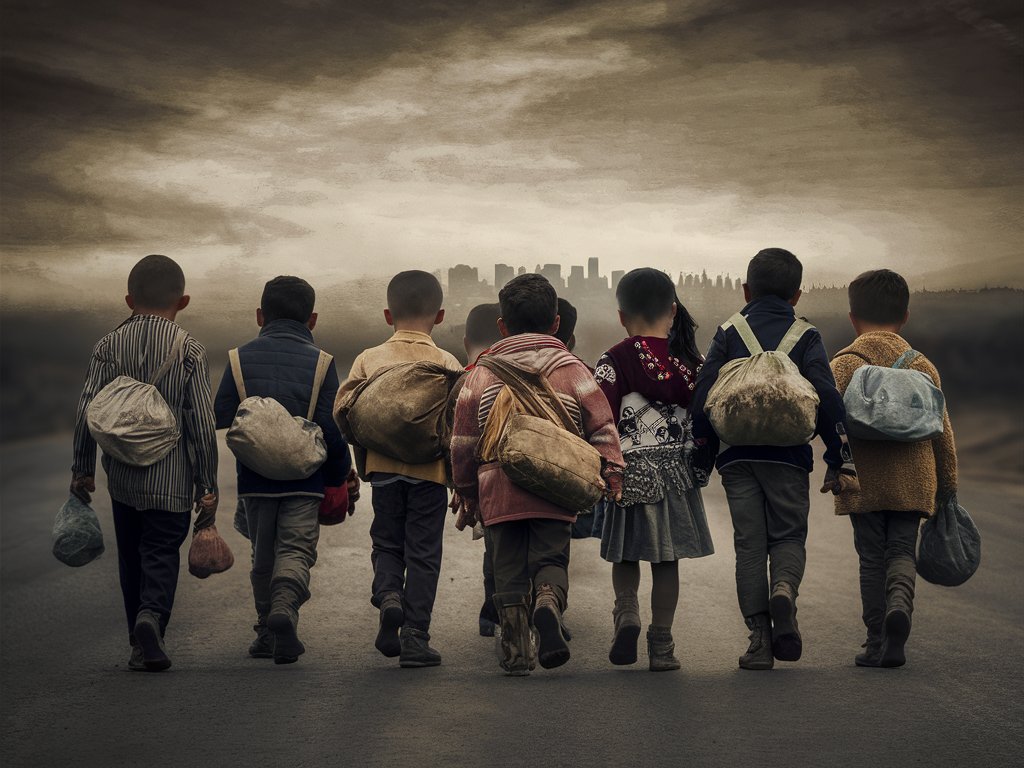Introduction to our 'Childhood and Migration' blog series
Over the coming weeks, we will be publishing a series of blogs on the theme of 'childhood and migration,' edited by our members Adrienne Lee Atterberry (Union College, US) and Karina Ruiz (University of California Santa Cruz, US). In this introduction, Adrienne and Karina provide an overview of the series.

Over the coming weeks, we will be publishing a series of blogs on the theme of ‘childhood and migration.’ Children – along with their parents, extended family members, and other caretakers – have always migrated. Their circumstances and motivations, however, have changed drastically over the past century.
For some, climate change, war, poverty, and violence severely affect daily life, to the point that they are compelled to migrate. These children, sometimes with the support of their families, may use the services of human smugglers to complete harrowing journeys by land or sea in search of better living conditions. Those whose journeys include crossing international borders often encounter resistance by destination countries, which seek to reaffirm tight border controls to clearly demarcate citizens from “unwanted outsiders.”
For others, the decision to migrate may be better conceptualized as a ‘choice.’ A segment of this group may migrate because of family mobility strategies that necessitate migration to increase social, educational, and professional opportunities for all family members. For children coming from educated and affluent families that ‘choose’ to migrate, their migration journey is often supported by neoliberal state policies that actively seek to recruit skilled and educated workers into their countries. The relatively warm reception these children encounter in their country of migration, and their parents’ ample personal resources (such as money and social connections), facilitate a comparatively smooth relocation process.
Still, there are children whose migration stories fall outside of these two broad typologies.
Importantly, migration processes impact children even when they are not the ones directly involved in relocating. The extant literature alludes to how factors as diverse and interconnected as the educational and financial resources available within an immigrant family, family separation and reunification processes, and parents’ immigration histories can impact the types of extracurricular activities children engage in, how they integrate into their parents’ country of migration, and their schooling experiences.
These early experiences with migration can have significant ripple effects well into later stages of life.
Owing to children’s important role in shaping family migration decisions, their prominent position as independent migrants, and the growing literature on how transnational family life impacts children, this blog series aims to draw further attention to the interconnections between childhood and migration.
The blogs featured in this series cover topics related to family, belonging, and (lack of) access to resources. They discuss the challenges that children and young people face in new cultural, social, and national contexts, and children’s work (along with the efforts of family members, governmental agencies, and NGOs) to integrate into their new space. The blogs also highlight the resilience of children and young people. Collectively, these blogs illustrate the global relevance of childhood and migration, and advance our understanding of the circumstances, challenges, and opportunities of contemporary childhood(s).
Over the course of six weeks, we will publish 10 blogs that touch upon varied aspects of childhood and migration. We will begin the series with a submission by Sarah Walker that examines the plight of African unaccompanied children who seek asylum in Italy during a time of increased anti-immigrant political sentiment. The next week will highlight the work of Susan Kay-Flowers and Philip Veerman whose blogs discuss the challenges of children and young people separated from their families. These will be followed by a pair of blogs authored by members of Youth for Unity and Voluntary Action and Senper Elisa Fisseha that explore children’s experiences and resilience when encountering resource deprivation in India and Ethiopia.
Blogs that examine forms of political and social belonging by Rianka Roy, and Jessica Schwittek and her co-author, Karin Kämpfe, will be published the following week. The next set of blogs will feature work by Ángel A. Escamilla Garcia on the migration of young people from Central America through Mexico, with the hopes of making it to the USA, and Sandra Castro, who describes how schools and mothers play a vital role in the academic success and integration of Central American immigrant children living in Long Island, New York. This will be followed by Laura Rennie’s poem, which documents the lives and legacies of Windrush children who migrated from the Caribbean to Britain after World War II. A concluding blog will recap the main themes of the series and point to possible directions for future work on childhood and migration.